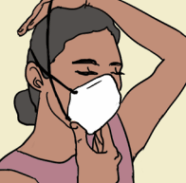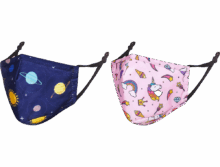
FFP3 Face Mask 1 to 500 masks
from
£3.99
FFP3 Face Masks, also known as N99 masks, provide the highest level of protection, filtering 99% of particles from the air. These masks are CE certified for sale in the UK and individually sealed, providing a clean and sterile environment. These masks are currently being used within the NHS.
Certification is provided with every order
See our FFP3 mask reviews
FFP3 Face Mask 1 to 500 masks
FFP3 Face Mask Prices
| Name & Dosage | x1 Mask (s) |
x3 Mask (s) |
x5 Mask (s) |
x10 Mask (s) |
x15 Mask (s) |
x25 Mask (s) |
x50 Mask (s) |
x75 Mask (s) |
x100 Mask (s) |
x150 Mask (s) |
x200 Mask (s) |
x300 Mask (s) |
x500 Mask (s) |
|---|---|---|---|---|---|---|---|---|---|---|---|---|---|
| FFP3 Face Mask (s) |
£3.99 | £11.95 | £18.99 | £35.99 | £51.99 | £80.99 | £159.99 | £229.99 | £299.99 | £429.99 | £549.99 | £799.99 | £1,299.99 |
About
What are FFP3 Face Masks?
FFP3 face masks, also known as N99 masks, are form of Personal Protective Equipment (PPE), which filter up to 99% of particles from the air. They provide protection to the wearer from viruses, bacteria and other harmful particles in the air. FFP3 masks provide the same amount of protection as each other, but have different names depending on where they have been made. These masks are commonly used by those working in the healthcare industry and are now being used by the general public to provide a higher level of protection than other masks. The “N” in N99 stands for “not resistant to oil”, and “FFP” stands for “Filtering Face Piece”. These PPE face masks are resistant to fluid and have been approved by the World Health Organisation for preventing the transmission of COVID-19.
Click here to see reviews of our FFP3 masks.
What is the FFP3 mask protection level?
FFP3 masks have a filtration rate of up to 99% and have 5 layers of protection. They are more effective than other respirators such as N95, FFP2, FFP1 and surgical masks. Whilst many healthcare professionals use FFP3 masks, our masks are not intended for use by medical professionals.
How do I use an FFP3 face mask?
FFP3 respirators cover the mouth and nose area. They have two elastic headbands which go over the head, or the ears to keep the mask securely in place. They are fitted with a metal strip which can be adjusted to secure a tight fit around the bridge of the nose, preventing air from entering through the sides of the mask. Please contact us if you require a specific type of mask.
Are FFP3 masks reusable?
FFP3 masks are not usually reusable and should be disposed of after one-time use. Most respirators will be marked with the letters “NR”, which stands for “Not Reusable”. This is because infectious particles are not visible to the naked eye, and it is not possible to tell if your respirator is contaminated. If you wish to reuse your face mask, you should look to purchase reusable face masks.
If you wish to reuse your face mask, there are a few points to consider:
- Whether the mask has been contaminated
- Whether you have made close contact with anyone who may be infected with a contagious disease whilst wearing your mask
- Used face masks should be hung in a specified storage area, or kept in a breathable container between uses, such as a paper bag
- Clean your hands with soap and water, or an alcohol-based sanitiser before and after touching your mask
- You should not make contact with the inside of the respirator. If this accidentally happens, dispose of the mask safely and wash your hands with soap and water or an alcohol-based sanitiser
- Use a clean pair of gloves to put on and secure your face mask. Once you have put it on and it is comfortable, safely dispose of the gloves
Are FFP3 masks washable?
FFP3 masks are not washable. High heat and certain liquids can destroy the structure of the mask, making them ineffective. If your respirator becomes infected, you should discard it and use a new one.
How do FFP3 face masks work?
FFP3 respirators are made of fine tangled fibres, creating a difficult path for small particles to travel through. This structure leads to particles being caught by the fibres, so they are unable to reach the mouth and nose. For a face masks to be effective, these pathways cannot be too small as they would make it difficult to breathe. At the same time, they cannot be too big, as this would allow all particles to pass through. These masks also exhibit electrostatic absorption, which is where electrostatic charges attract very small particles to the fibres of the mask. FFP3 masks are also fluid resistant, so fluid will not absorb through the mask, offering a high level of protection. FFP3 masks are designed in a way to allow the user to breathe, whilst providing a high level of protection from airborne viruses, such as coronavirus.
How long can you use an FFP3 Mask for?
You can use these respirators for up to 8 hours. However, if you remove your mask or suspect that it has become contaminated, you should discard the respirator and use a new one.
What is an FFP3 mask with a valve?
FFP3 masks with a valve contain a small plastic structure, which allows small amounts of air to be released, without allowing any air into the mask. These masks provide protection to the user but offer limited protection to those around them. These masks are predominantly for use by those with breathing difficulties, such as asthma, COPD and cystic fibrosis.
What is the difference between N95 / FFP2 masks and N99 / FFP3 masks?
There is no difference between N99 and FFP3 masks, as they both offer the same level of protection. The difference in name is due to different codes depending on the country in which the masks were manufactured. N99 equates to FFP3 in the same way the N95 equates to FFP2. The difference between FFP1, FFP2 (N95) and FFP3 (N99) respirators are the number of particles which they filter. N99 respirators filter up to 99% of particles, providing the highest level of protection, followed by N95 or FFP2 masks, which filter up to 95% of airborne particles, and FFP1 masks, which filter around 80% of particles.
To find out more information, you can read our article about the difference between FFP3 (N99) masks and FFP2 (N95) masks.
Can children wear these masks?
These masks are not designed to fit the face of a child. If you wish to purchase a face mask for a child, you should look for specific children’s face masks.
Should I use a mask with a headband, or an ear loop?
Masks with headbands generally provide a tighter and more secure fit. They form a seal around the face, minimising the chances of your mouth and noses from coming into contact with airborne particles.
What is a duckbill FFP3 mask?
A duckbill FFP3 or N99 mask resembles the shape of a duck’s beak. They offer the same level of protection as the standard flat folded mask; except they cover a wider surface area of the face. These masks offer a good fit for those with a larger face size.
FFP3 face mask fitting
To ensure maximum protection, you should ensure that you wear the FFP3 respirator correctly. This is to avoid cross contamination, and to ensure that there are minimal gaps to reduce the risk of infection. You can see “how to wear an FFP3 mask” under our instructions tab.
What are the NHS guidelines on FFP3 masks?
UK Guidelines state that FFP3 masks are the recommended masks for use by NHS professionals, who are at medium to high risk. These respirators are predominantly used by staff who work in hospitals, such as nurses and doctors. This is because they offer the highest level of protection to the wearer. Research suggest that if worn correctly, FFP3’s can provide up to 100% protection.
Where can I buy FFP3 face masks from?
To ensure maximum protection, you should ensure that you wear the FFP3 respirator correctly. This is to avoid cross contamination, and to ensure that there are minimal gaps to reduce the risk of infection. You can see “how to wear an FFP3 mask” under our instructions tab. If you are an organisation, you may wish to train staff on the correct face mask fitting method.
How to use FFP3 Face Mask

Cup the respirator in your hand ensuring that the nose-piece is at the top and the headbands are hanging freely

Position the respirator under your chin with the nose-piece resting on the bridge of your nose

While holding the respirator in position, place one loop over your head

Still holding the respirator, place the other loop over your head

Using both hands, adjust the malleable nose-piece so that it fits snugly against the bridge of your nose and face

Using a mirror, check to ensure that all of the edges provide a good seal around your face
Product Reviews
product rated 4.7/5
Adjustable head straps, individually wrapped mask
By Mr Susan Boyd (via Reviews.io)Always reliable
By Mr Susan Boyd (via TrustPilot)High quality mask.
By David Norrie (via TrustPilot)Good fit and lasts well
By S Cullen (via TrustPilot)Superintendent Pharmacist
Written by Chemist Click
First created 30th April 2025
Last reviewed 10th October 2025
Other options include:

Our Awards & Certifications
Our team of experienced pharmacists and healthcare professionals are dedicated to providing the highest level of care and service to every customer, ensuring that they receive the best possible healthcare experience.

Our Clients Say:
Constantly good service, always very quick to deliver items.
By Phil ElliottHighly recommend. Fast delivery. Reliable.
By Carlene GraceHad a great experience, right from consultation to med delivery it was very efficient and professional. Thanks.
By Shefali PathakEasy to navigate website, regularly use their service, prompt timely delivery, discounts for regular customers could be considered.
By ArunI shopped around before purchasing and items price was good. Delivery was prompt and P+P reasonable. Item was as described. Good service.
By Mark LockettGood website, intuitive with great information. Efficient, from payment through to delivery, and good communication updates all the way.
By Graeme WalkerExcellent service. I ordered some meds which was dispatched very quickly and arrived super fast. The meds has a very long expiry date. I would definitely order again. Many thanks.
By Ian TBest company there is for me. Great service and excellent quality plus pricing is perfect. I wouldn't want to use anyone else in all honesty. I have recommended this company to all my friends. It's a tricky subject for us older guys but this company makes it all respectful and they discretion is very much appreciated by us all.
By Mr Franklin









